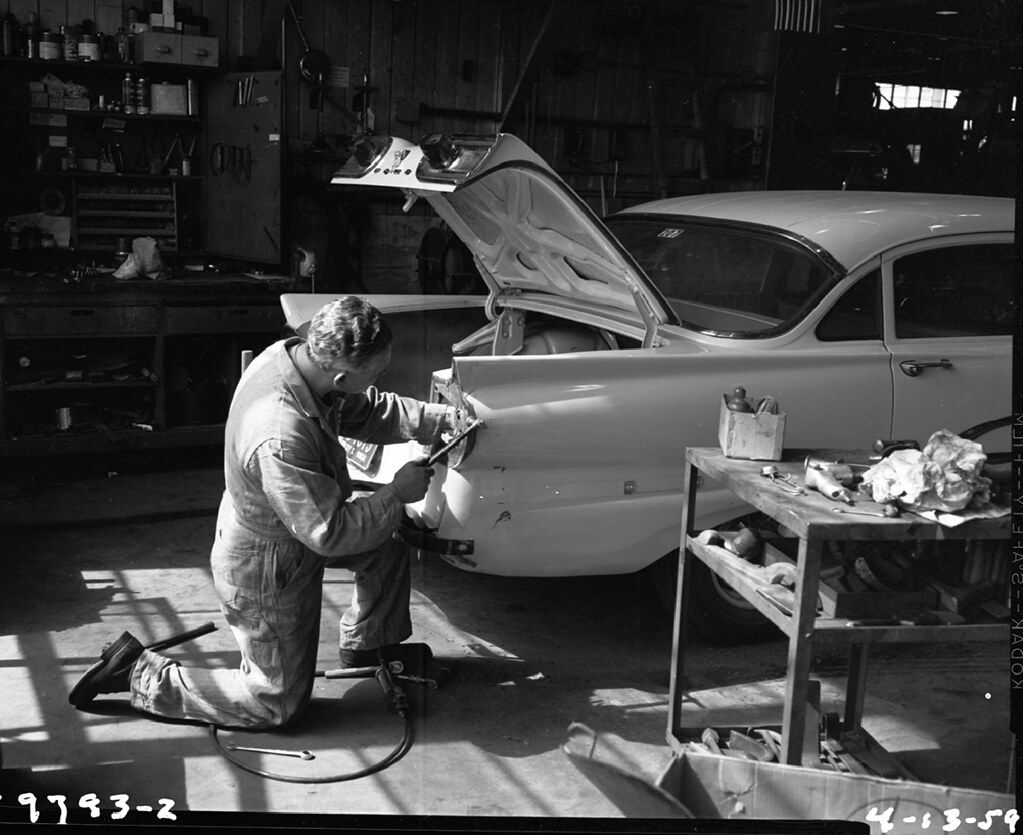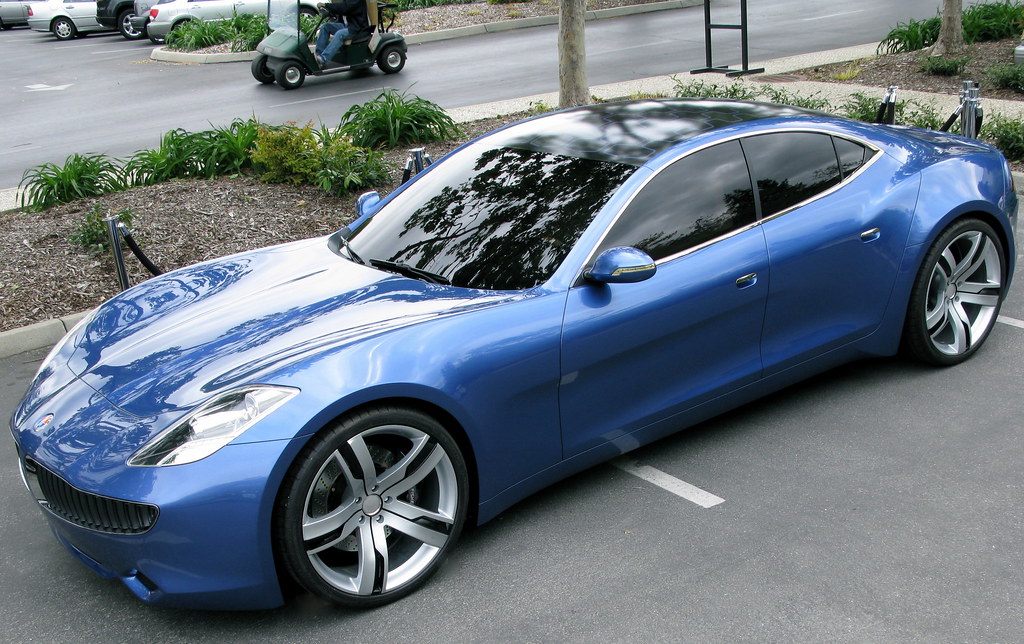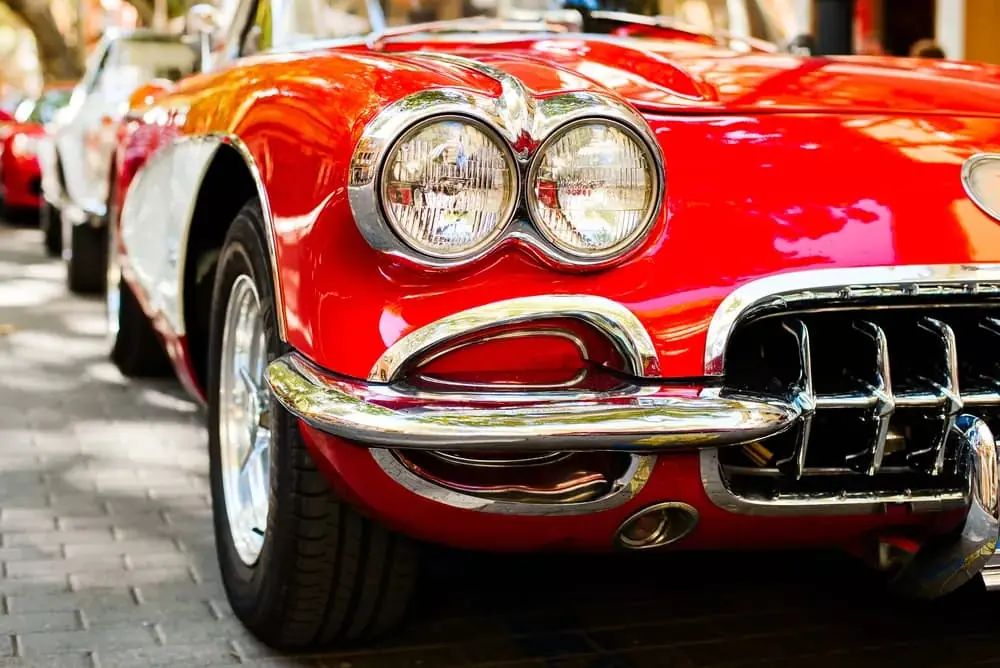
The allure of classic cars often transcends mere transportation, weaving itself into the fabric of personal histories and collective nostalgia. For the Baby Boomer generation, these vehicles represent more than just machinery; they embody the spirit of their youth, economic eras, and the evolving landscape of American automotive design. From the rumble of a powerful V8 to the distinctive lines of a luxury cruiser, these cars hold a special, cherished place in the hearts of those who grew up with them, sparking fond memories of family trips, first dates, and a different pace of life.
However, as generations succeed one another, the definition of what constitutes a “cool ride” undergoes a fascinating transformation. What one generation cherishes, another might view through an entirely different lens, shaped by contemporary values, technological advancements, and shifting societal priorities. This generational gap is particularly evident in the automotive world, where the cherished icons of yesteryear are increasingly met with skepticism, disinterest, or even outright criticism from younger demographics, especially Millennials.
This article delves into the fascinating divide between Baby Boomer affection and Millennial apprehension regarding a selection of classic vehicles. We’ll examine specific models that boomers hold in high regard, juxtaposing their nostalgic appeal with the practical, aesthetic, and performance-related critiques voiced by Millennials. Through this exploration, we aim to uncover the underlying reasons for this generational divergence, shedding light on how factors like design, fuel efficiency, safety, and modern driving expectations are reshaping the classic car market.
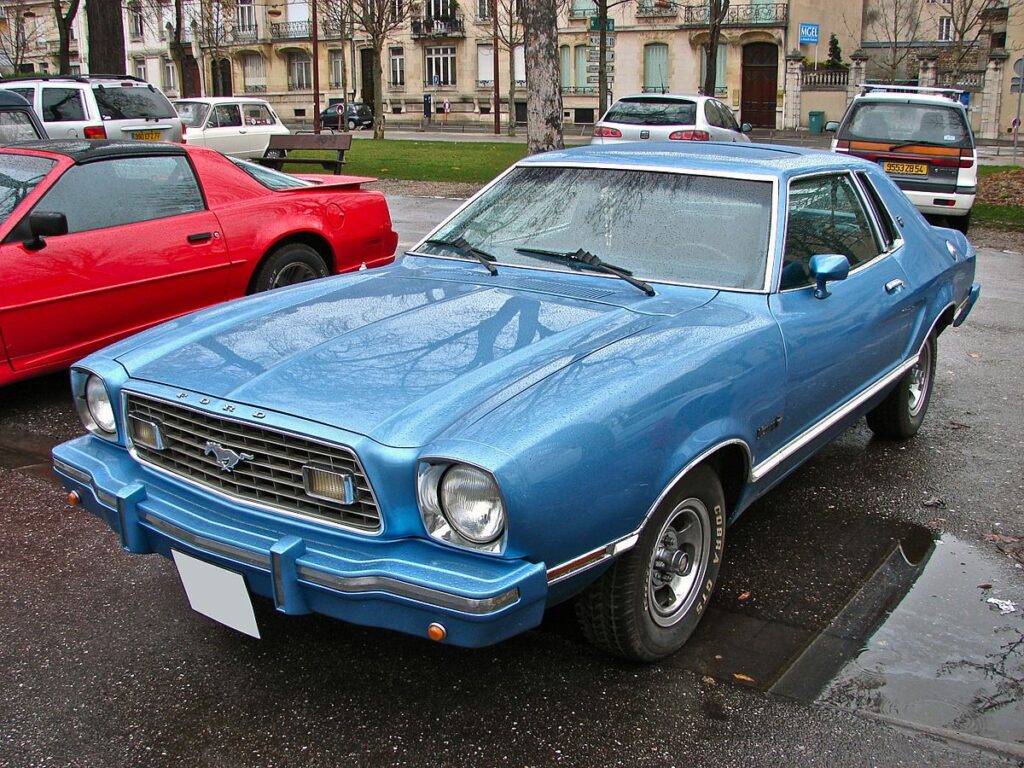
1. **Ford Mustang II: A Lineage Diverted**The Ford Mustang II holds a peculiar, often debated, position within the storied Mustang lineage. For Baby Boomers, this model, produced during a challenging era, often evokes a sense of nostalgia as a continuation of the iconic pony car during the fuel crisis of the 1970s. It represented Ford’s attempt to adapt the Mustang to changing economic realities and consumer demands for smaller, more efficient vehicles, making it a pragmatic choice for many at the time.
Yet, for many Millennials, the Ford Mustang II represents a significant departure from what they perceive as the true essence of the Mustang. Their criticism frequently centers on the car’s perceived betrayal of its performance-oriented roots. Younger enthusiasts often lament its underwhelming performance metrics and its general shift away from the muscular, aggressive styling that defined its predecessors and later iterations.
The design, too, often falls flat with the Millennial demographic. While boomers might appreciate its scaled-down proportions in context of its time, Millennials frequently describe its aesthetics as bland, lacking the distinctive flair and visual appeal associated with the Mustang’s golden age. This perceived stylistic compromise, coupled with its performance shortcomings, makes it a less desirable collector’s item for those seeking the quintessential Mustang experience.
This car exemplifies the tension between historical context and evolving expectations. What was once a pragmatic response to market conditions is now often seen as a misstep, highlighting how generational perspectives on design evolution and performance benchmarks can drastically alter a car’s long-term desirability within the collector community. The Mustang II’s story is a compelling case study in how market adaptation can sometimes lead to a loss of original identity in the eyes of future generations.
Car Model Information: 2021 Jeep Grand Cherokee Laredo X
Name: Second generation
Caption: Ford Mustang II coupe
Aka: Ford Mustang II , Ford T5 (in Germany)
Class: Pony car,Subcompact car
Production: 1973–1978
ModelYears: 1974–1978
Predecessor: Ford Mustang (first generation)
Successor: Ford Mustang (third generation)
Assembly: Unbulleted list
Layout: Front-engine, rear-wheel-drive layout
BodyStyle: coupé,hatchback
Related: Ford Pinto,Ford Pinto
Manufacturer: Ford Motor Company
Engine: ubl
Transmission: ubl
Wheelbase: cvt
Length: cvt
Width: cvt
Height: cvt
Designer: Buck Mook, Dick Nesbitt
Categories: All articles with dead external links, All articles with unsourced statements, Articles with dead external links from April 2024, Articles with permanently dead external links, Articles with short description
Summary: The second-generation Ford Mustang, marketed as the Ford Mustang II, is a two- or three-door, four-passenger, front-engine/rear-drive pony car manufactured and marketed by Ford from 1973 until 1978. Introduced in September 1973 for the 1974 model year, the Mustang II arrived roughly coincident with the oil embargo of 1973 and subsequent fuel shortages. Developed under Lee Iacocca, it was an “entirely new kind of pony car.” Ford “decided to call it Mustang II, since it was a new type of pony car designed for an era of high gas prices and fuel shortages.”
The Mustang II was 490 lb (222 kg) lighter and almost 19 in (483 mm) shorter than the 1973 Mustang, and derived from the subcompact Pinto platform. While sharing a limited number of driveline components with the Pinto, the Mustang II employed an exclusive subframe, isolating its front suspension and engine mount subframe. The steering used a rack-and-pinion design.
Named Motor Trend’s 1974 Car of the Year and reaching over 1.1 million sales over four years of production, the Mustang II is noted simultaneously for both its marketing prescience and strong sales – while criticized as having abandoned essential aspects of the Mustang heritage and described, in a retrospective after 40 years since its introduction, as embodying the Malaise era.
Get more information about: Ford Mustang (second generation)
Buying a high-performing used car >>>
Brand: Ford Model: Mustang II
Price: $27,316 Mileage: 34,523 mi.
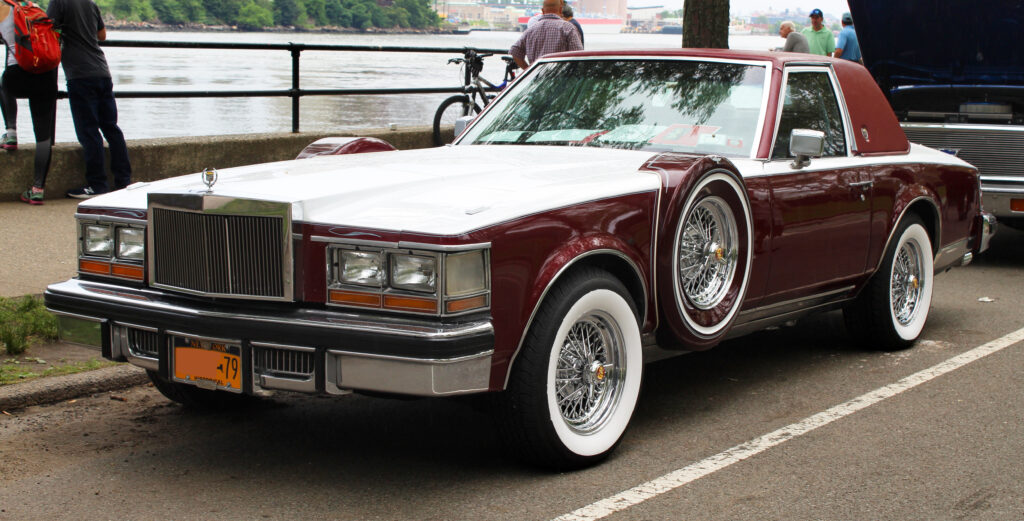
2. **Cadillac Seville: From Premium to Perceived Excess**The Cadillac Seville, especially in its earlier iterations, is fondly remembered by Baby Boomers as the epitome of premium American luxury and sophisticated styling. Launched in the mid-1970s, it offered a more manageable size than some of Cadillac’s larger offerings while still exuding an undeniable aura of comfort and prestige. For many boomers, it was a symbol of success and a benchmark for opulent American automotive design, providing a smooth and stylish ride.
However, Millennials often view the Cadillac Seville through a more critical lens, seeing it as emblematic of the perceived excesses of past American automotive design. Its substantial body and focus on grandeur, rather than efficiency, frequently clash with contemporary values. This perspective is shaped by a modern automotive landscape that increasingly prioritizes fuel economy, environmental consciousness, and more compact, agile vehicle architectures.
The large dimensions of the Seville, once a mark of luxury and spaciousness, are now often seen as impractical. In an era where urban driving and parking considerations are paramount, and where smaller, more economical vehicles dominate the market, the Seville’s size and inherent fuel inefficiency make it appear outdated and less appealing to a generation focused on sustainable and practical choices.
This generational shift underscores a fundamental change in what defines automotive desirability. While boomers valued comfort and status conveyed through size and opulence, millennials are driven by a different set of criteria that includes economic efficiency and environmental impact. The Seville, therefore, becomes less of a desirable classic and more of a historical artifact that highlights a bygone era of automotive philosophy, underscoring its diminished appeal among younger enthusiasts.
Car Model Information: 1999 Cadillac Seville Base
Name: Cadillac Seville
Caption: 1998–2004 Cadillac Seville
Manufacturer: Cadillac
Production: 1975–2003
ModelYears: 1976–2004
Class: luxury car
Layout: FR layout
Predecessor: Cadillac Calais
Successor: Cadillac STS
Categories: 1980s cars, 1990s cars, All articles with unsourced statements, Articles with short description, Articles with unsourced statements from October 2016
Summary: The Cadillac Seville is a mid-size luxury car manufactured by Cadillac from the 1976 to 2004 model years as a smaller-sized, premium model. It was replaced by the STS in 2004 for the 2005 model year.
Get more information about: Cadillac Seville
Buying a high-performing used car >>>
Brand: Cadillac Model: Seville
Price: $19,900 Mileage: 36,875 mi.
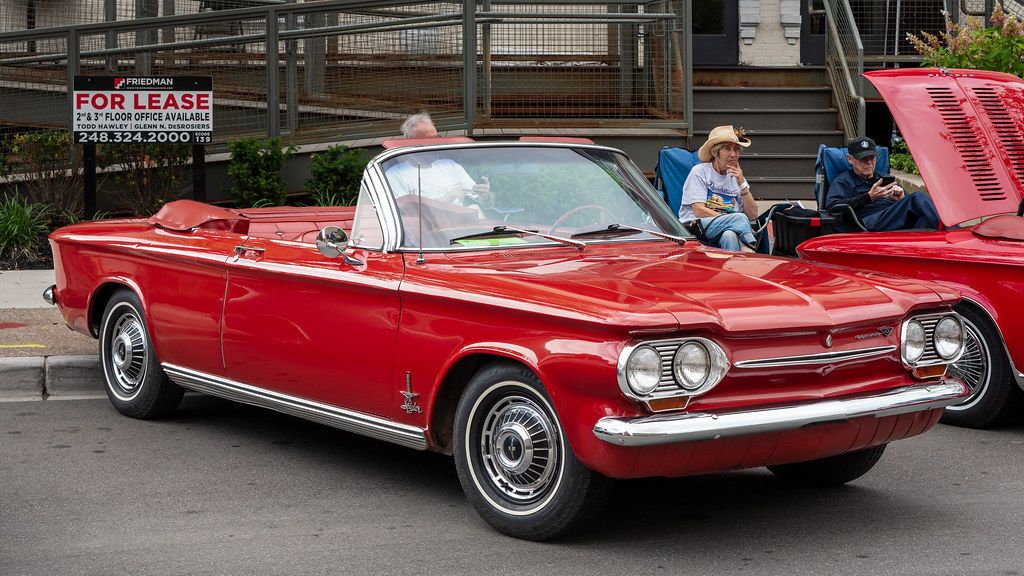
3. **Chevrolet Corvair: Innovation Met with Controversy**The Chevrolet Corvair, with its distinctive rear-mounted, air-cooled engine and genuinely innovative design, captivated many Baby Boomers upon its introduction. It represented a bold step for an American automaker, venturing into engineering territory more commonly associated with European marques. For its time, the Corvair was a forward-thinking vehicle that offered a unique driving experience and stood apart from its more conventional competitors, earning it a special place in automotive history.
Despite its innovative spirit, the Corvair also became entangled in significant controversy, particularly regarding its handling and safety. These issues, famously highlighted in a consumer advocacy book, cast a long shadow over the car’s reputation. While boomers might recall its novel design, Millennials are often quick to reference these historical criticisms, making the Corvair a less desirable classic for a generation highly attuned to safety standards and engineering integrity.
The perceived handling issues contribute significantly to the Corvair’s lower desirability among younger enthusiasts. Modern drivers are accustomed to sophisticated suspension systems and advanced stability controls, and the historical accounts of the Corvair’s dynamic shortcomings make it a less attractive proposition. This focus on demonstrable safety and predictable handling is a key factor in Millennial car assessment, often overshadowing the car’s pioneering design.
Therefore, the Chevrolet Corvair stands as a poignant example of how public perception and historical critique can overshadow engineering innovation. While its unique design principles are admirable from a historical standpoint, the lingering concerns about its safety and handling capabilities make it a challenging sell to a generation that prioritizes reliability and a reassuring driving experience above all else, even in a classic vehicle.
Car Model Information: 1964 Chevrolet Corvair Monza
Caption: 1964 Chevrolet Corvair Monza
Name: Chevrolet Corvair
Manufacturer: Chevrolet
Production: 1960–1969
Platform: GM Z platform
Chassis: Unibody
ModelYears: 1960–1969
Assembly: United States,Kansas City, Missouri,Oakland, California,Van Nuys,St. Louis,Flint, Michigan,Belgium,Canada,Mexico,South Africa,Switzerland,Venezuela
Class: Compact car
Successor: Chevrolet Vega
Layout: Rear-engine, rear-wheel-drive layout
Categories: All Wikipedia articles written in American English, All articles lacking in-text citations, All articles needing additional references, All articles with dead external links, All articles with specifically marked weasel-worded phrases
Summary: The Chevrolet Corvair is a rear-engined, air-cooled compact car manufactured and marketed by Chevrolet over two generations between 1960 and 1969. The Corvair was a response to the increasing popularity of small, fuel-efficient automobiles, particularly the imported Volkswagen Beetle and the success of American-built compacts like the Rambler American and Studebaker Lark.
The first generation (1960–1964) was offered as a four-door sedan, two-door coupe, convertible, and four-door station wagon. A two- and four-door hardtop and a convertible were available second generation (1965–1969) variants. The Corvair platform was also offered as a subseries known as the Corvair 95 (1961–1965), which consisted of a passenger van, commercial van, and pickup truck variant. Total production was approximately 1.8 million vehicles from 1960 until 1969.
The name “Corvair” was first applied in 1954 to a Corvette-based concept with a hardtop fastback-styled roof, part of the Motorama traveling exhibition. When applied to the production models, the “air” part referenced the engine’s cooling system.
A prominent aspect of the Corvair’s legacy derives from controversy surrounding its handling, articulated aggressively by Ralph Nader’s Unsafe at Any Speed and tempered by a 1972 Texas A&M University safety commission report for the National Highway Traffic Safety Administration (NHTSA) which found that the 1960–1963 Corvair possessed no greater potential for loss of control in extreme situations than contemporary compacts.
To better counter popular inexpensive subcompact competitors, notably the Beetle and Japanese imports such as the Datsun 510, GM replaced the Corvair with the more conventional Chevrolet Vega in 1970.
Get more information about: Chevrolet Corvair
Buying a high-performing used car >>>
Brand: Chevrolet Model: Corvair
Price: $29,988 Mileage: 74,787 mi.
Read more about: More Than Just a Chassis: Uncovering 11 Catastrophic Design Flaws That Defined Automotive Infamy
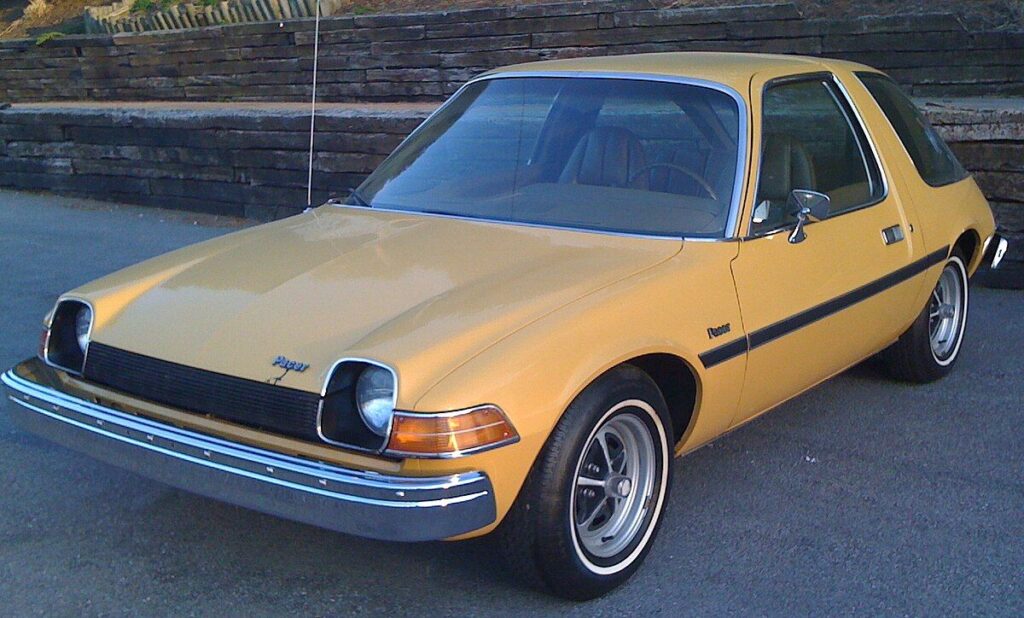
4. **AMC Pacer: A Unique Vision Reimagined as a Misstep**When the AMC Pacer debuted, it was heralded for its bold innovation and truly unique styling, presenting a radical departure from conventional automotive design. For some Baby Boomers, this “wide small car” with its distinctive bubble-like appearance and expansive glass area was an intriguing attempt to break the mold, offering a fresh perspective on compact vehicle architecture. It was an optimistic vision, aiming to redefine urban mobility and passenger comfort.
However, the Pacer’s unconventional aesthetics are precisely what often draw criticism from Millennials. Younger generations frequently regard the Pacer as oddly shaped and visually inefficient, often making light of its distinctive, somewhat exaggerated, bubble-like appearance. What was once touted as innovation is now more commonly seen as a stylistic misstep, struggling to find appreciation within current aesthetic sensibilities.
Beyond its divisive looks, the Pacer’s practical inefficiencies also contribute to its diminished appeal. In an automotive market that increasingly values streamlined design and optimal use of space, the Pacer’s bulky yet compact form factor can seem counterintuitive. Millennials are often looking for cars that are both visually appealing and functionally superior, and the Pacer struggles to meet these dual expectations within their framework.
The AMC Pacer thus serves as a powerful illustration of how automotive design can be a polarizing subject across generations. What one era might celebrate as daring and forward-thinking, another might simply dismiss as peculiar or misguided. Its story highlights the transient nature of stylistic trends and how a car’s attempt at groundbreaking design can be re-evaluated as an oddity rather than an icon by subsequent generations, especially those focused on modern utility and refined aesthetics.

5. **Ford Pinto: Affordability Clouded by a Safety Legacy**The Ford Pinto, during its heyday in the 1970s, gained considerable popularity, particularly among Baby Boomers, who often reminisce about its affordability and practicality. It was marketed as an economical and accessible vehicle, fitting the needs of many families and young drivers looking for reliable transportation in a changing economic climate. Its compact size and low purchase price made it a staple on American roads, embodying a period of essential, no-frills motoring.
Yet, despite its widespread popularity, the Ford Pinto has become notoriously associated with a significant and enduring safety scandal. The risk of its fuel tank catching fire upon rear impact became a well-publicized issue, leading to a lasting negative perception of the model. For Millennials, this safety legacy is a dominant factor, heavily influencing their view of the car, often overshadowing any historical practicality or affordability it once offered.
The awareness of these severe safety concerns makes the Pinto a particularly unappealing choice for younger generations. In a world where vehicle safety ratings and crash test results are readily available and highly scrutinized, a car with a known, critical safety flaw is almost universally dismissed. Millennials prioritize safety features and a secure driving experience, making the Pinto’s historical baggage a substantial deterrent, regardless of its vintage status.
Consequently, the Ford Pinto serves as a stark reminder of how safety concerns can indelibly mark a vehicle’s reputation across generations. While Boomers might recall its utility, Millennials overwhelmingly perceive it as dangerous, a car to be avoided rather than collected. This illustrates the profound impact of consumer safety awareness and how past design compromises can permanently affect a vehicle’s standing in the collective automotive consciousness, shaping its desirability for future generations.
Car Model Information: 1978 Ford Pinto RUNABOUT HATCHBACK
Name: Ford Pinto
Caption: Ford Pinto
Manufacturer: Ford Motor Company
Aka: Mercury Bobcat
Production: September 1970 – July 1980
ModelYears: 1971–1980 (Pinto),1974–1980 (Bobcat)
Assembly: Edison, New Jersey,Milpitas, California
Designer: Robert Eidschun (1968)
Class: Subcompact car
BodyStyle: Sedan (automobile),sedan delivery,station wagon,hatchback
Related: #Mercury Bobcat (1974–1980),Ford Mustang (second generation)
Layout: Front-engine, rear-wheel-drive layout
Chassis: Unibody
Engine: unbulleted list
Abbr: on
Disp: Ford Cologne engine
Transmission: unbulleted list
Wheelbase: 94.0 in
Length: 163 in
Width: 69.4 in
Height: 50 in
Weight: convert
Predecessor: Ford Cortina#Mark II (1966–1970)
Successor: Ford Escort (North America)
Categories: 1980s cars, Articles with short description, Cars discontinued in 1980, Cars introduced in 1970, Commons category link from Wikidata
Summary: The Ford Pinto is a subcompact car that was manufactured and marketed by Ford Motor Company in North America from 1970 until 1980. The Pinto was the first subcompact vehicle produced by Ford in North America.
The Pinto was marketed in three body styles throughout its production: a two-door fastback sedan with a trunk, a three-door hatchback, and a two-door station wagon. Mercury offered rebadged versions of the Pinto as the Mercury Bobcat from 1975 until 1980 (1974–1980 in Canada). Over three million Pintos were produced over its ten-year production run, outproducing the combined totals of its domestic rivals, the Chevrolet Vega and the AMC Gremlin. The Pinto and Mercury Bobcat were produced at Edison Assembly in Edison, New Jersey, St. Thomas Assembly in Southwold, Ontario, and San Jose Assembly in Milpitas, California.
Since the 1970s, the safety reputation of the Pinto has generated controversy. Its fuel-tank design attracted both media and government scrutiny after several deadly fires occurred when the tanks ruptured in rear-end collisions. A subsequent analysis of the overall safety of the Pinto suggested it was comparable to other 1970s subcompact cars. The safety issues surrounding the Pinto and the subsequent response by Ford have been cited widely as business ethics and tort reform case studies.
Get more information about: Ford Pinto
Buying a high-performing used car >>>
Brand: Ford Model: Pinto
Price: $19,000 Mileage: 91,000 mi.
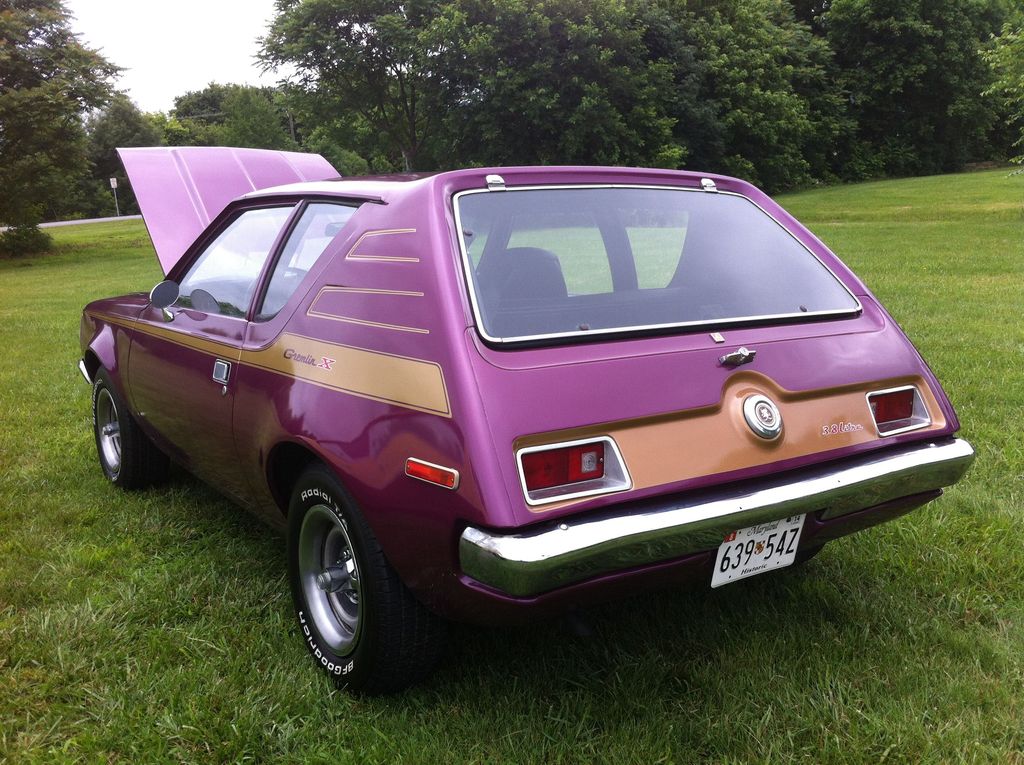
6. **AMC Gremlin: Unique Aesthetics Versus Performance Scrutiny**The AMC Gremlin is undeniably one of the most unique and distinctive vehicles to emerge from American automotive design. Its bold, truncated rear styling and unusual proportions instilled a sense of novelty that some Baby Boomers now view with a degree of nostalgia. For those who recall its introduction, the Gremlin was a car that dared to be different, offering a compact and characterful option that stood out in an era often dominated by more conventional designs.
However, the very aesthetics that evoke nostalgia for some often become a point of contention for Millennials. Younger generations tend to intensely dislike the Gremlin for its unusual appearance, frequently finding its cut-off, unconventional styling to be aesthetically challenging rather than charming. What was once seen as daring is now more likely to be labeled as odd, struggling to fit into modern perceptions of desirable automotive design.
Beyond its divisive looks, the AMC Gremlin also faces criticism regarding its less-than-stellar performance metrics. While historical context might explain some of its engineering choices, Millennials, accustomed to more refined power delivery and handling, often find its driving dynamics uninspiring. This combination of challenging aesthetics and modest performance figures further diminishes its appeal as a classic worth pursuing for a generation with different expectations.
Thus, the AMC Gremlin provides another compelling case study in the subjective nature of automotive appeal across generations. Its unique design, while perhaps a source of fond recollection for some, struggles to resonate with a demographic that prioritizes a blend of appealing aesthetics, reliable performance, and a clear sense of purpose in vehicle design. The Gremlin’s story underscores how a car’s radical styling can become a barrier to its adoption as a cherished classic by future enthusiasts.
Beyond the initial six examples, the generational divergence in automotive preferences deepens as we explore additional classic vehicles that once captured the hearts of Baby Boomers but struggle to find a place in Millennial garages. This next set of cars highlights a broader shift in what defines a desirable vehicle, moving past pure nostalgia towards considerations of practicality, efficiency, and an evolving automotive aesthetic. Millennials are not shying away from the collector market; rather, they are redefining it with their distinct priorities and values, often seeking out modern classics or those that offer a different kind of appeal.
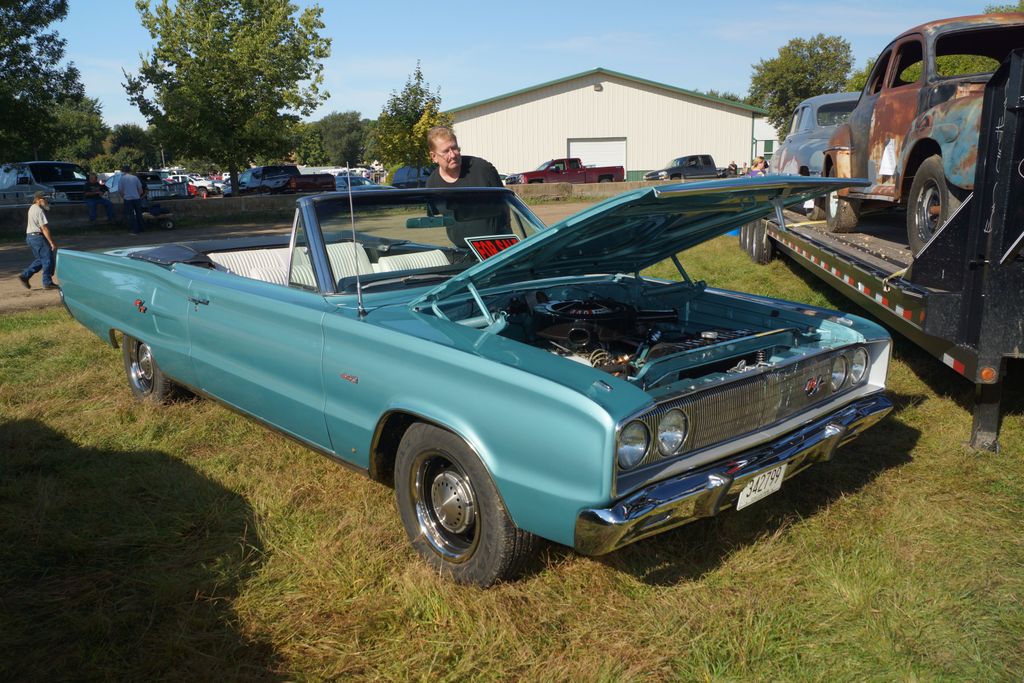
7. **Dodge Coronet: Simplicity Versus Modern Expectations**The Dodge Coronet, in its prime, was widely appreciated by Baby Boomers as a solid, dependable family car. It embodied a straightforward approach to motoring, offering ample space and robust performance that suited the needs of many American households during its era. For its owners, the Coronet was a reliable workhorse, reflecting the unpretentious values of its time.
However, many Millennials often dismiss the Coronet, largely due to whatthey perceive as its plain design. In an age where automotive aesthetics are increasingly refined and diverse, the Coronet’s rather unadorned styling struggles to capture the attention of a generation accustomed to more intricate or distinctive visual cues. This simplicity, once a virtue, is now often seen as a lack of character.
Furthermore, its large size, a common trait among many full-size American cars of the period, appears out of step with contemporary automotive values. Millennials prioritize efficiency and maneuverability, especially in urban environments. The Coronet’s dimensions, while offering comfort and presence, clash with a preference for more compact and agile vehicles, diminishing its appeal as a practical classic.
This generational critique underscores a fundamental shift in design philosophy. What was once considered functional and respectable is now often deemed unremarkable. The Coronet’s journey from a family staple to a largely overlooked classic illustrates how changing societal values around size and styling can profoundly impact a vehicle’s long-term desirability in the collector market.
Car Model Information: 1967 Dodge Coronet Restomod
Name: Dodge Coronet
Caption: 1967 Dodge Coronet R/T
Manufacturer: Dodge
Production: 1949–1959,1965–1976
Class: Full-size
Predecessor: Dodge Custom
Successor: Dodge Dart
Layout: FR layout
Categories: 1950s cars, 1970s cars, All articles with dead external links, All articles with unsourced statements, Articles with dead external links from June 2016
Summary: The Dodge Coronet is an automobile that was marketed by Dodge in seven generations, and shared nameplates with the same bodyshell with varying levels of equipment installed. Introduced as a full-size car in 1949, it was the division’s highest trim line and moved to the lowest level starting in 1955 through 1959. The name was reintroduced on intermediate-sized models from the 1965 until 1976 model years. Muscle car versions were available starting in 1965 with the 383 and 426 wedge cu in (7.0 L) Chrysler RB engine, followed in 1966 by the powerful 426 cu in (7.0 L) Chrysler Hemi. Other performance models included the “Superbee”, and featured, the 383 cu in (6.3 L) Magnum, among other engine options. The nameplate “coronet” is a type of crown worn by royalty.
In the 1980s, the Coronet was used on Dodge models marketed in Colombia.
Get more information about: Dodge Coronet
Buying a high-performing used car >>>
Brand: Dodge Model: Coronet
Price: $46,500 Mileage: 2,818 mi.
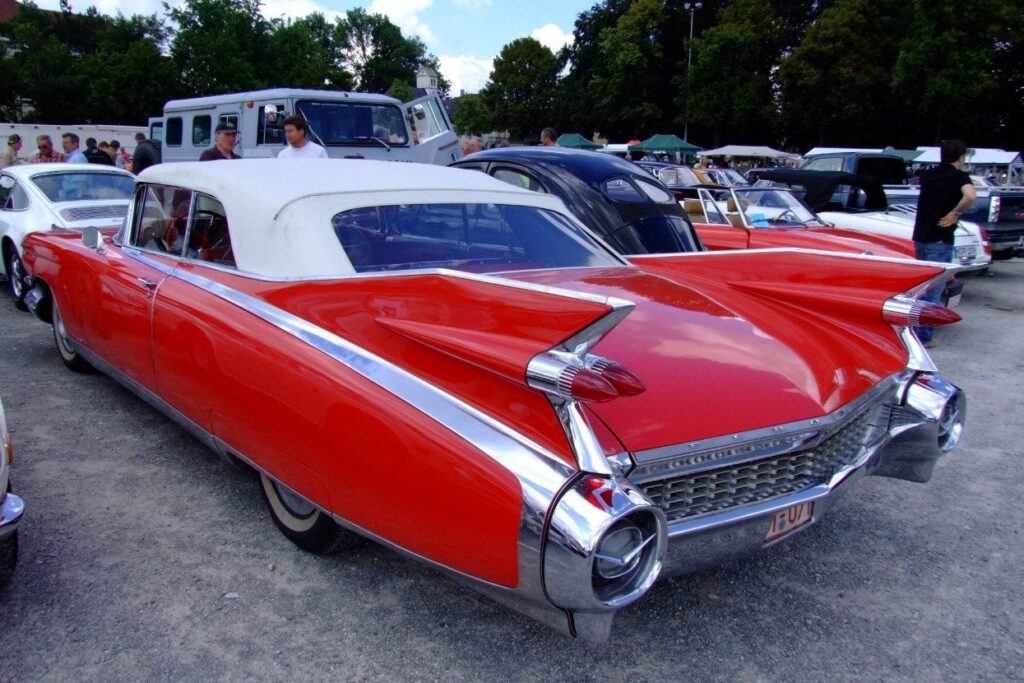
8. **Cadillac Eldorado: Opulence Over Practicality**For Baby Boomers, the Cadillac Eldorado was a quintessential symbol of luxury and high status. With its long lines, plush interiors, and powerful V8 engines, it represented the pinnacle of American automotive opulence and comfort. Owning an Eldorado was an expression of success, offering a grand and smooth cruising experience that few other cars could match in its heyday.
Yet, Millennials frequently criticize the Eldorado for what they see as its excessive size and poor fuel efficiency. In today’s automotive landscape, where environmental consciousness and economic operation are increasingly valued, the Eldorado’s emphasis on sheer scale and lavishness appears anachronistic. Its substantial dimensions are often viewed as impractical rather than prestigious.
This critique is deeply rooted in Millennial values, which often prioritize environmental impact and financial sensibility. The Eldorado’s considerable fuel consumption, a byproduct of its large engine and heavy construction, directly clashes with a generation focused on sustainable and cost-effective transportation. The allure of its past grandeur is overshadowed by these modern concerns.
Consequently, the Cadillac Eldorado serves as a stark example of how shifting generational values can transform a luxury icon into a perceived anachronism. While its historical significance as a symbol of American automotive extravagance remains, its practical drawbacks and environmental footprint make it a less attractive proposition for younger buyers who prioritize a different set of criteria in their vehicle choices.
Car Model Information: 1984 Cadillac Eldorado
Caption: 1963 Cadillac Eldorado Convertible
Name: Cadillac Eldorado
Manufacturer: Cadillac
Production: 1952–2002
Layout: Front-engine, rear-wheel-drive layout
Aka: Cadillac Fleetwood Eldorado
Class: Personal luxury car
Successor: Cadillac CTS
Categories: 1960s cars, 1970s cars, 1980s cars, 1990s cars, 2000s cars
Summary: The Cadillac Eldorado is a luxury car manufactured and marketed by the Cadillac Motor Car Division of General Motors from 1952 until 2002, over twelve generations.
The Eldorado was at or near the top of the Cadillac product line. The original 1953 Eldorado convertible and the Eldorado Brougham models of 1957–1960 had distinct bodyshells and were the most expensive models offered by Cadillac during those years. The Eldorado was never less than second in price after the Cadillac Series 75 limousine until 1966. Beginning in 1967, the Eldorado retained its premium position in the Cadillac price structure, but was manufactured in high volumes on a unique, two-door personal luxury car platform.
The Eldorado carried the Fleetwood designation from 1965 through 1972, and was seen as a modern revival of the pre-war Cadillac V-12 and Cadillac V-16 roadsters and convertibles.
Get more information about: Cadillac Eldorado
Buying a high-performing used car >>>
Brand: Cadillac Model: Eldorado
Price: $13,990 Mileage: 50,720 mi.

9. **Mercury Comet: Overshadowed and Unremarkable**The Mercury Comet, during its production, was positioned as a stylish yet affordable compact car, appealing to many Baby Boomers seeking a blend of practicality and understated elegance. It offered a more refined alternative to some of its plainer contemporaries, providing a comfortable ride with a touch of Mercury’s distinctive styling. It was a solid choice for everyday motoring.
However, Millennials often find the Comet largely unremarkable. When viewed alongside the more flamboyant and powerful muscle cars that defined the era, the Comet’s performance and style were frequently overshadowed. It lacked the raw, aggressive appeal or the iconic status that many of its more celebrated peers achieved, making it less memorable in retrospect.
This perceived lack of distinctiveness prevents the Comet from resonating with younger collectors who are often looking for cars with a strong identity or a significant cultural footprint. Its modest performance figures, while adequate for its time, don’t ignite the passion for speed and power that draws many to the muscle car genre.
The Mercury Comet’s story illustrates how a car, despite being perfectly competent and even stylish in its own right, can fade into the background when compared to more iconic models. For Millennials, the absence of a compelling narrative or standout features makes it a less desirable classic, struggling to compete for attention in a crowded field of automotive legends.
Car Model Information: 1964 Mercury Comet Sedan
Name: Mercury Comet
Aka: Comet
Caption: 1964 Mercury Comet Caliente coupé
Manufacturer: Mercury (automobile)
Production: 1960–1961 (“Comet”), 1962–1977 (“Mercury Comet”)
Assembly: Oakville, Ontario,Canada,Claycomo, Missouri,United States,Lorain, Ohio,United States,Milpitas, California,United States,Wayne, Michigan,United States
Class: Compact car
Related: Ford Fairlane (Americas),Ford Falcon (North America),Ford Maverick (North America),Ford Torino,Mercury Montego
Layout: FR layout
Successor: Mercury Zephyr,Mercury Monarch
Categories: 1960s cars, 1970s cars, All articles with unsourced statements, Articles with short description, Articles with unsourced statements from August 2019
Summary: The Mercury Comet is an automobile that was produced by Mercury from 1962–1969 and 1971–1977 — variously as either a compact or an intermediate car. For 1960 and 1961, Comet was its own brand sold by Lincoln-Mercury “Comet”.
The compact Comet shared a naming convention associated with the ongoing Space Race of the early 1960s with the Mercury Meteor, which was introduced as the base-trim full-size Mercury sedan.
The Comet was initially based on the compact Ford Falcon, then on the intermediate Ford Fairlane, and finally on the compact Ford Maverick. Early Comets received better-grade interior trim than concurrent Falcons, and a slightly longer wheelbase.
Get more information about: Mercury Comet
Buying a high-performing used car >>>
Brand: Mercury Model: Comet
Price: $9,993 Mileage: 44,274 mi.
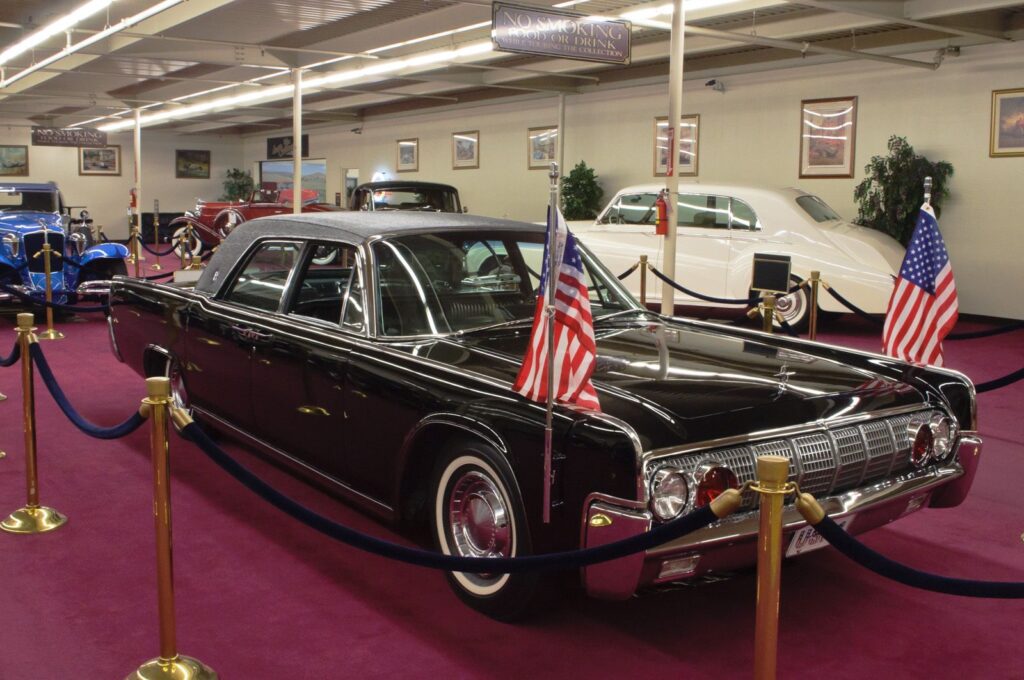
10. **Lincoln Continental with Suicide Doors: A Grand Design, Modernly Impractical**The Lincoln Continental, particularly the models iconic for their “suicide doors” (rear-hinged passenger doors), holds a special place in Boomer hearts as a representation of ultimate luxury and sophisticated design. Its imposing presence and elegant functionality were revered, signaling a bygone era of American automotive grandeur and innovative styling.
For Millennials, however, the very elements that define this luxury often translate into impracticality. The Continental’s large size, while contributing to its majestic appearance, is viewed as cumbersome and inefficient, especially when navigating today’s increasingly congested urban environments. Parking and maneuvering such a substantial vehicle present real-world challenges.
The “suicide doors,” while historically significant and visually striking, are also often seen as less practical in modern contexts, particularly concerning safety in tight spaces. This clashes with a generation that values seamless functionality and ease of use in their vehicles, whether classic or contemporary. The romanticism of the design is often outweighed by its daily use drawbacks.
The Lincoln Continental with its distinctive doors exemplifies a design philosophy that, while once aspirational, now struggles to align with contemporary automotive preferences. What was once seen as the height of luxury and unique design is now often viewed through the lens of functionality and urban usability, rendering it less appealing to a generation prioritizing practical considerations.
Car Model Information: 2018 Lincoln Continental Reserve
Name: Lincoln Continental
Caption: 2019 Lincoln Continental
Manufacturer: Lincoln Motor Company
Production: 1939–1942,1946–1948,1956–2002,2016–2020
ModelYears: 1940–1942,1946–1948,1958–1980,1982–2002,2017–2020
Class: Full-size car,luxury car
Layout: Longitudinal engine,Front-engine, rear-wheel-drive layout
Categories: 1930s cars, 1940s cars, 1950s cars, 1960s cars, 1970s cars
Summary: The Lincoln Continental is a series of mid-sized and full-sized luxury cars produced between 1939 and 2020 by Lincoln, a division of the American automaker Ford. The model line was introduced following the construction of a personal vehicle for Edsel Ford, who commissioned a coachbuilt 1939 Lincoln-Zephyr convertible, developed as a vacation vehicle to attract potential Lincoln buyers. In what would give the model line its name, the exterior was designed with European “continental” styling elements, including a rear-mounted spare tire.
In production for over 55 years across nine different decades, Lincoln has produced ten generations of the Continental. Within the Lincoln model line, the Continental has served several roles ranging from its flagship to its base-trim sedan. From 1961 to 1976, Lincoln sold the Continental as its exclusive model line. The model line has also gone on hiatus three times. From 1949 to 1955, the nameplate was briefly retired. In 1981, the Continental was renamed the Lincoln Town Car to accommodate the 1982 seventh-generation Continental. After 2002, the Continental was retired, largely replaced by the Lincoln MKS in 2009; in 2017, the tenth-generation Continental replaced the MKS.
As part of its entry into full-scale production, the first-generation Continental was the progenitor of an entirely new automotive segment, the personal luxury car. Following World War II, the segment evolved into coupes and convertibles larger than sports cars and grand touring cars with an emphasis on features, styling, and comfort over performance and handling. From 1956 to 1957, the Continental nameplate was the namesake of the short-lived Continental Division, marketing the 1956–1957 Continental Mark II as the worldwide flagship of Ford Motor Company; as a second successor, Ford introduced the Continental Mark series in 1969, produced over six generations to 1998.
Along with the creation of the personal luxury car segment, the Lincoln Continental marked the zenith of several designs in American automotive history. The Continental is the final American vehicle line with a factory-produced V12 engine (1948), the final four-door convertible (1967), and the final model line to undergo downsizing (for the 1980 model year).
American production of the Continental and MKZ, its only two sedans, ended in 2020 thereby making Lincoln a crossover/SUV-only brand in the US.
Get more information about: Lincoln Continental
Buying a high-performing used car >>>
Brand: Lincoln Model: Continental
Price: $22,523 Mileage: 86,549 mi.
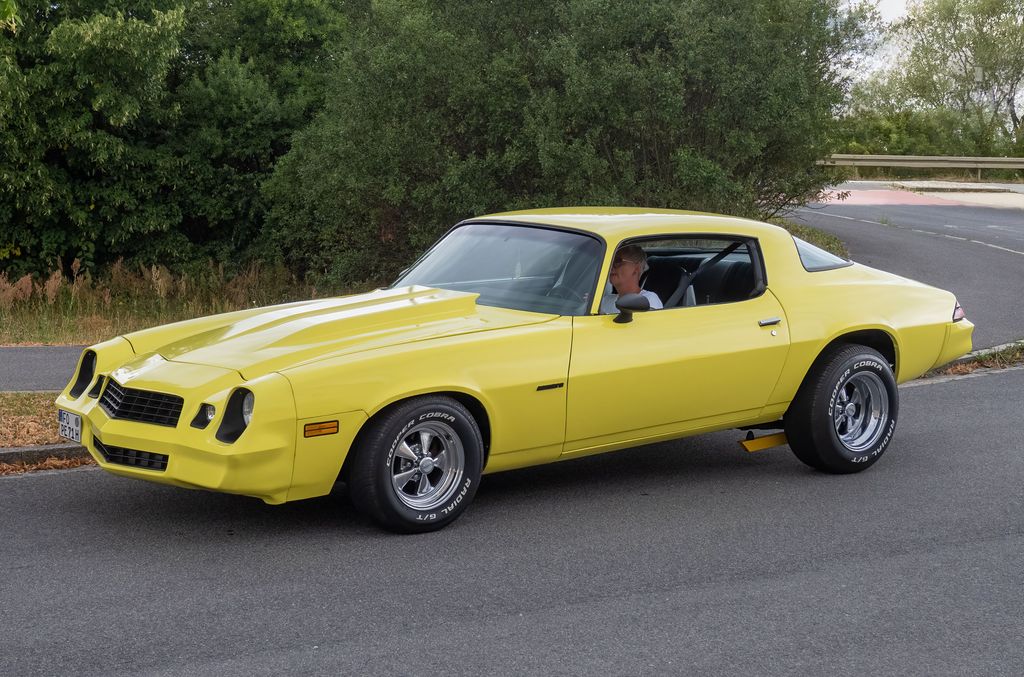
11. **Pontiac Trans Am: Raw Power Versus Refined Performance**The Pontiac Trans Am is an undisputed icon of Boomer culture, celebrated extensively in films and television shows of the 1970s and 80s. It was a symbol of raw performance, distinctive style, and American muscle, etching itself into the collective memory of a generation that appreciated its aggressive stance and powerful engine options.
Yet, Millennials often overlook the Trans Am, primarily due to what they perceive as a lack of sophistication and refinement when compared to contemporary sports cars. Modern performance vehicles offer advanced engineering, precise handling, and a more integrated driving experience that can make older muscle cars, despite their power, feel somewhat crude.
The Trans Am’s bold styling, while iconic to its era, can also be a point of contention. What was once seen as daring and powerful is sometimes viewed as over-the-top or dated by a generation that tends to favor more understated or sleek modern designs. This aesthetic disconnect, combined with its less-than-cutting-edge technology, diminishes its appeal.
The Pontiac Trans Am’s journey from a celebrated icon to a car often bypassed by younger enthusiasts highlights a generational shift in what constitutes desirable performance and style. While its legacy of raw power remains, the absence of modern refinement and technological integration makes it a less compelling choice for Millennials accustomed to a different standard of automotive excellence.
Car Model Information: 2024 Honda Civic LX
Name: Pontiac Firebird
Caption: The second, third, and fourth generations of,the Pontiac Firebird Trans Am
Manufacturer: Pontiac (automobile)
Production: February 23, 1967 – August 30, 2002
ModelYears: 1967 – 2002
Class: Pony car,Muscle car
Platform: GM F platform
Related: Chevrolet Camaro
Layout: Front engine, rear-wheel-drive layout
Categories: 1970s cars, 1980s cars, 1990s cars, 2000s cars, All articles with dead external links
Summary: The Pontiac Firebird is an American automobile built and produced by Pontiac from the 1967 to 2002 model years. Designed as a pony car to compete with the Ford Mustang, it was introduced on February 23, 1967, five months after GM’s Chevrolet division’s platform-sharing Camaro. This also coincided with the release of the 1967 Mercury Cougar, Ford’s upscale, platform-sharing version of the Mustang.
The name “Firebird” was also previously used by GM for the General Motors Firebird series of concept cars in the 1950s.
Get more information about: Pontiac Firebird
Buying a high-performing used car >>>
Brand: Pontiac Model: Trans Am
Price: $21,650 Mileage: 17,979 mi.
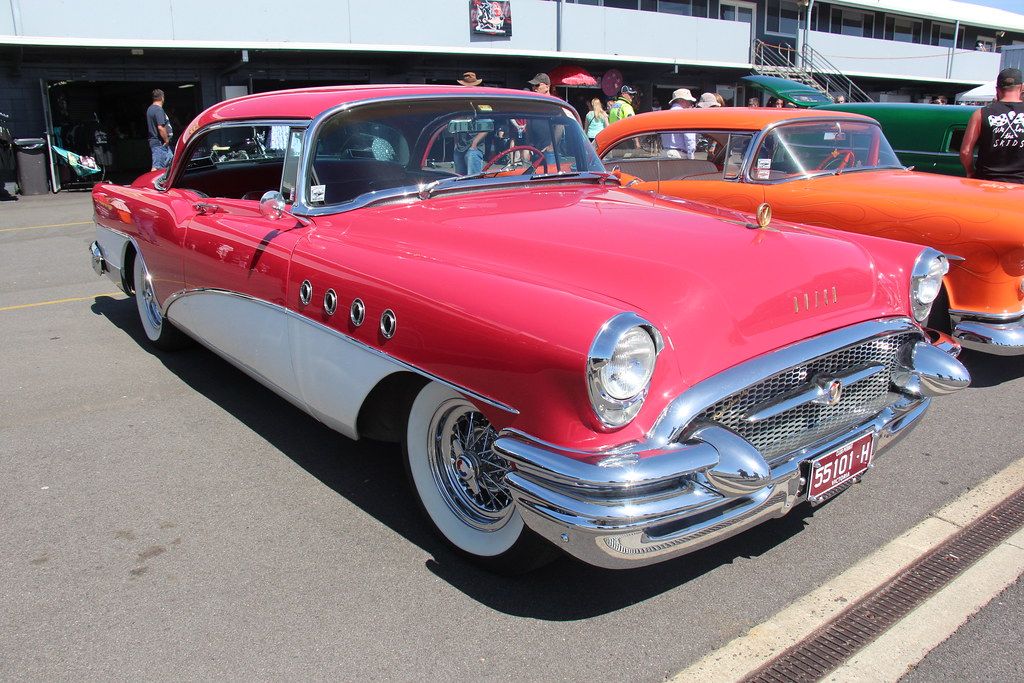
12. **Buick Riviera: Daring Design Meets Efficiency Concerns**The Buick Riviera, particularly the striking “boat-tail” models of the early 1970s, is widely admired by Baby Boomers for its daring design and smooth, luxurious ride. It represented a bold statement in automotive styling, offering a unique blend of elegance and sportiness that set it apart from its contemporaries, making it a truly distinctive classic.
However, Millennials often view the Riviera as an outdated gas-guzzler, focusing on its inherent fuel inefficiency. In an era increasingly conscious of environmental impact and running costs, the powerful V8 engines and substantial weight of the Riviera make it an expensive and less sustainable choice. This practical concern often overshadows its design merits.
Furthermore, while Boomers appreciated its “daring design,” Millennials sometimes find the styling to be too bold or even polarizing for their tastes. What was once an innovative and eye-catching feature can, with time, become a point of aesthetic contention, failing to align with current design preferences that often lean towards more subtle or timeless forms.
The Buick Riviera thus serves as another compelling illustration of how practicality and evolving aesthetic preferences intersect across generations. Its unique design, while a source of nostalgia and admiration for some, struggles to overcome the modern concerns regarding fuel economy and styling alignment, making it a less desired classic for a new generation of car enthusiasts.
Car Model Information: 1971 Buick Riviera
Caption: 1963 Buick Riviera
Name: Buick Riviera
Predecessor: Buick Super
Manufacturer: Buick
ModelYears: 1963–1993,1995–1999
Class: Personal luxury car
Categories: 1960s cars, 1970s cars, 1980s cars, 1990s cars, All articles with specifically marked weasel-worded phrases
Summary: The Buick Riviera is a personal luxury car that was marketed by Buick from 1963 to 1999, with the exception of the 1994 model year.
As General Motors’ first entry into the personal luxury car market segment, the Riviera was highly praised by automotive journalists upon its high-profile debut. It was a ground-up design on a new GM E platform debuting for the 1963 model year and was also Buick’s first unique Riviera model.
Unlike its subsequent GM E platform stablemates, the Oldsmobile Toronado and Cadillac Eldorado, the Riviera was initially a front engine/rear-wheel drive platform, switching to front-wheel drive starting with the 1979 model year.
While the early models stayed close to their original form, eight subsequent generations varied substantially in size and styling. A total of 1,127,261 Rivieras were produced.
The Riviera name was resurrected for two concept cars that were displayed at auto shows in 2007 and in 2013.
Get more information about: Buick Riviera
Buying a high-performing used car >>>
Brand: Buick Model: Riviera
Price: $22,499 Mileage: 91,150 mi.
This exploration of additional classic cars further solidifies the understanding that the Millennial generation’s relationship with automotive icons is distinct from that of Baby Boomers. It’s not a blanket rejection of classic cars, but rather a re-evaluation based on a different set of priorities centered on practicality, efficiency, safety, and a more refined aesthetic. While the “excesses” and “quirks” of some Boomer classics fail to resonate, this doesn’t mean Millennials are disengaged from the collector market. In fact, data consistently reveals a vibrant and growing interest. Surveys like the Hagerty “Why Driving Matters” study indicate that a significant majority of Millennials are interested in classic car ownership, with reported ownership already higher among this demographic than any other. They are actively seeking out “modern classics” or “young timers” – vehicles from the 1990s and early 2000s – that offer a blend of nostalgic appeal with contemporary drivability, reflecting a desire for both character and convenience. This generation is poised to be the largest and most lucrative buying group in the collector car space, shaping its future by embracing vehicles that align with their values and lifestyle choices, proving that the passion for unique automobiles continues to thrive, albeit in an evolving landscape. Ultimately, the kids are alright; they just have different tastes in classic cars.

